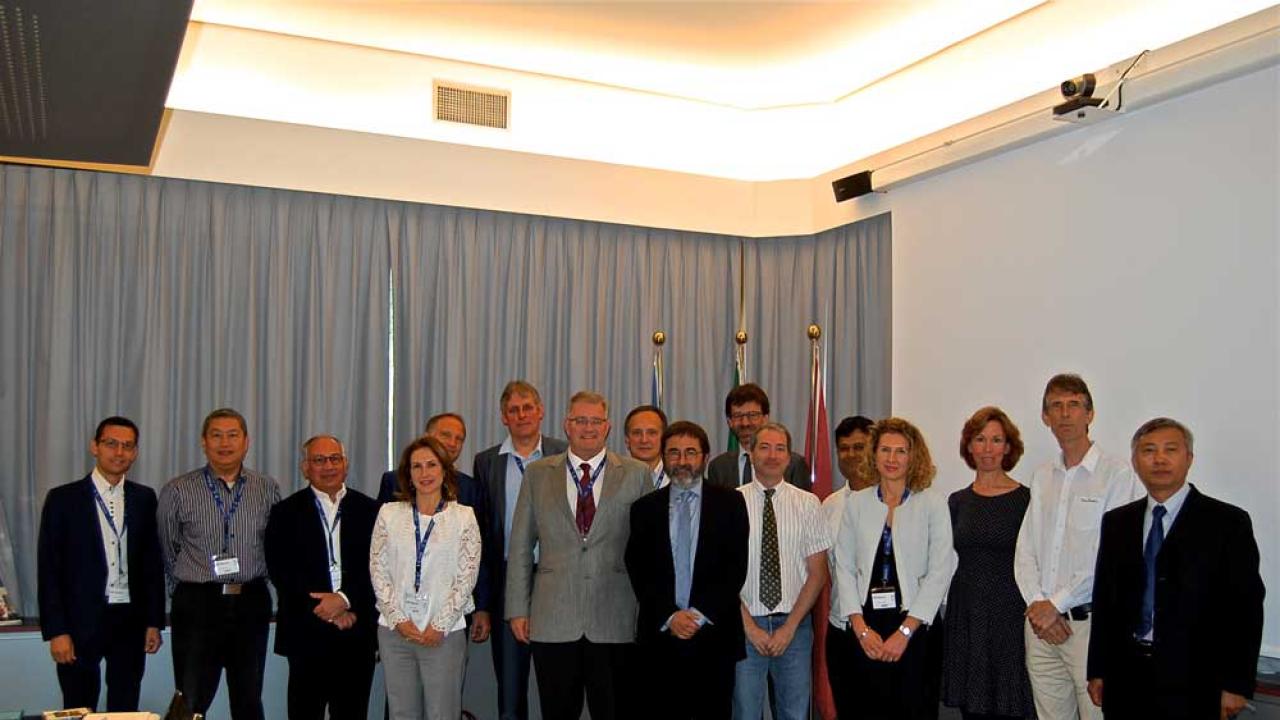
Science diplomacy has played a significant role in the history of big, international research institutions and organizations, like CERN and ICTP, where science overcomes political borders. But what does science diplomacy practically mean, and how can science organizations leverage it to their best interests and to the interests of society?
To answer these questions, the BRIDGES network (Big Research Infrastructures for Diplomacy and Global Engagement through Science) was founded, as a collaboration between professionals involved in science diplomacy, from some of the world's largest international research organizations. The nature of this collaboration is informal and open, and has the goal of sharing resources, experiences and strengths and therefore of offering practical help to its members.
Jan Marco Müller, Acting Chief Operations Officer at IIASA, the International Institute for Applied Systems Analysis, based in Vienna, had the initial idea that started the project. “We always talk about the great and good of science diplomacy, and building bridges between nations,” says Müller. “But, I thought: what does it mean, very practically, in the daily life of someone who does a job like mine?” With that question in mind, Müller reached out to other people whose work lies at the interface between scientific research and diplomacy, in order to create a network, to connect and share perspectives. “Each of these international research organizations,” adds Müller, “has its own advantages, its own contacts, and we can help each other when it comes to approaching a policymaker, for instance.”
IIASA and ICTP are founding members of this network; ICTP agreed to host the group’s first meeting that took place on 11 July at its campus in Trieste, Italy. The other current members of the network include representatives from institutions such as CERN, ESA, JRC, SESAME, EMBL, ESO, ILL, ITER, SKAO, and European XFEL.
“In the present day, there are a number of challenges for all humankind, like climate change and the state of our ecosystems,” says Müller. “But there are also challenges that are science- and technology-driven, such as digitalization or artificial intelligence. And many of those are spaces in which all of our research institutions are operating, so we could share our perspectives on how to communicate with policymakers and how to get messages across.”
The importance of communication is also underlined by Maurizio Bona, Senior Advisor for relations with Parliaments and Science for Policy and Senior Advisor on knowledge transfer at CERN, and another founder of the network. “In my opinion,” says Bona, “we need to find the language to talk to the so-called world of ‘policymakers’, made up of diplomats, parliaments, governments, academia and so on.”
One of the main purposes of the BRIDGES network is indeed to build a more efficient connection with policymakers. “Rather than each of us going individually to a policymaker, we can agree on the message we want to pass,” says Müller.
According to both Müller and Bona, science has the ability, by its own neutral and universal nature, to promote exchange and interaction, and therefore may also serve as a role model for other “worlds”, such as politics, that have to deal with different problems. However, “what is important in science diplomacy, I think” says Bona, “is that we should not implicate science with politics, or it would lose its credibility. Instead, we should use the so-called ‘soft power’ of science, to help societal growth as well as intercultural dialogue, which can possibly result in activities of international peace or collaboration.”
If, on one hand, science diplomacy could have a very practical purpose, providing policymakers with science and technology advice, it also has, on the other hand, a more ‘intangible’ aspect. “By the pure fact that we as scientists work together with other scientists from all different nations, including nations that have troubled political relations with each other, we in a way prepare a ground on which diplomatic relations can flourish,” says Müller.
The role that the practice of research plays in interpersonal relationships is a fundamental one also, according to Bona. “For example, the fact that in scientific research there must be the maximum openness, the maximum freedom, the maximum exchange, is something that is absolutely intrinsic in our daily way of working,” says Bona. “You will never find, in a scientific or educational environment, someone who does not sit at a colleague's table because they are of a different religion or come from different countries.”
Science can, therefore, act as a model for international relations, and help building a common ground for people who work in other fields. “This is, I think, the core of what science diplomacy really is,” says Bona. “I hope that the BRIDGES network could foster the exchange of these experiences and maybe find a way to strengthen their impact on the whole society.”
---- Marina Menga
















